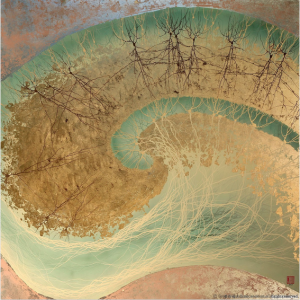Why do psychologists always want to dig around in your childhood? Shouldn’t it be more like, “That was then, this is now”? Isn’t it supposed to be “live in the moment, don’t blame your parents for everything that’s wrong, keep calm and carry on”?
The thing is, though, that even from a brain-wiring perspective, your first experiences with love and relationships—those you have with your parents—have a huge influence on how you deal with relationships throughout your life. The your-parents-to-you relationship covertly operates in important, behind-the-scenes ways in your later you-to-your-partner romantic love relationships. The lessons of our primary childhood relationships run so deep and so strong—and often waaay outside our conscious awareness—that we are all extraordinarily challenged to overcome them.
Lou Cozolino, PhD, is a clinical psychologist who studies and writes about neuroscience, especially about how our brains influence our relationships (and vice versa), and I appreciate his clear take on this: “Because the first few years of life are a period of exuberant brain development, early experiences have a disproportionate impact on the shaping of our neural systems, with lifelong consequences.”1
Think of it this way: the accumulated experiences of your relationship with your parents is like deeply integrated software that’s always running in the background when it comes to love.
This software—how it goes between our parents and us, and what we learn about relationships from them in early childhood—is, in psych-speak, attachment. For the vast majority of people, attachment styles fall into two broad categories: secure and insecure.
Slightly more than half of adults in the US (55%), according to the research, fall into the “healthy” category, called a secure attachment style.2 Our parents were able to regularly tune into us, meeting our emotional needs on a consistent basis and giving us a sense of safety, security, and well-being. (Some of those fifty-five-percenters may have what’s called “earned” secure attachment, through experiences after childhood—as one example, by working in psychotherapy.)
But that means, of course, the other 45% of us—and again, that’s just about half the population—didn’t have a consistent, responsive secure attachment harbor. As a result, we have an insecure style of attachment. We tend to either have an ambivalent/anxious feeling about seeking comfort or closeness (we want it but we perceive it as risky) or the desire to minimize or avoid relationships altogether. We develop this style as the best adaptation to our environment, in the same way that people who live in subarctic regions adapt by eating large quantities of fatty foods to produce extra body heat, wear heavy clothing, and sleep in a huddle.
Why is knowing about early attachment so important?
Because the style of attachment you develop in childhood is most often a lifetime deal. It drives and influences how you interact with others, how you see yourself in relationships, and, as much as we might not like to believe this, it deeply influences the kinds of partners we attract and are attracted to. All too often, they end up being precisely what we don’t need, despite our best efforts.
When I talk about this with my patients, I almost invariably hear something like, “Don’t you think this is a bit over the top? I probably fall into the insecure category, but it’s not like my childhood was something out of Oliver Twist.”
I’m not talking about traumatic, awful childhoods and horrific, evil parents. And I’m definitely not jumping into the pile of mother-blamers and father-bashers who hold their parents responsible for everything that subsequently doesn’t go well in their own lives. But the fact is that fairly often, ordinary, run-of-the-mill parent-child attachment simply falls short of what we need to create healthy, secure relationships later in our lives.
Having an insecure attachment style isn’t the equivalent of being broken, deranged, whacko, or some other label that falls in the realm of “pathological,” but it does cause us quite a lot of pain, confusion, and unhappiness. Understanding it is the first, necessary piece of untangling from the knots that were tied.
1Cozolino, L. (2008). It’s a jungle in there: We’re not as evolved as we think. Psychotherapy Networker, Sep/Oct 2008.
2 There are a number of different measures of both childhood and adult attachment patterns or styles, but various studies show that (a) childhood patterns of attachment are generally quite stable throughout the lifespan in the general population (e.g. Fraley, C. (2002). Attachment stability from infancy to adulthood: Meta-analysis and dynamic modeling of developmental mechanisms. Personality and Social Psychology Review ,6, 123-151.), and (b) roughly 55% of children have secure attachment, a decrease of close to 10% between 1995 and 2005 [Sroufe, L. A., Egeland, B., Carlson, E., & Collins, W. A. (2005). The development of the person: The Minnesota Study of Risk and Adaptation from Birth to Adulthood. New York: Guilford Press].


